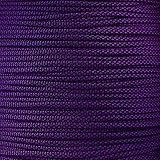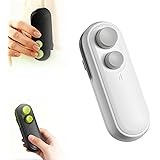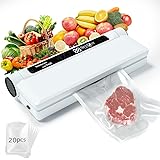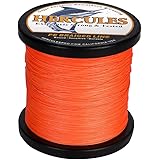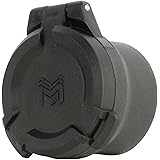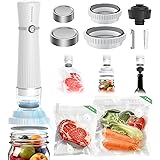Crafting Your Comprehensive Home Medical Kits for Off-Grid Readiness
As was meticulously showcased in the accompanying video from Jesse with Survival Summit, the construction of a robust home medical kit transcends basic first aid, evolving into a multifaceted system designed for a spectrum of potential emergencies. This detailed overview of their home medical kits highlights the critical importance of being prepared for scenarios ranging from everyday injuries to complex trauma and even extended off-grid situations. A truly comprehensive approach to emergency medical preparedness involves an understanding of various medical disciplines, ensuring that a household is equipped to manage health crises when conventional medical services may be unavailable or overwhelmed.
The strategic assembly of these vital supplies is not merely about owning individual items; rather, it is about creating a layered defense against unforeseen medical challenges. When one considers the potential for natural disasters, extended power outages, or other disruptions to infrastructure, the necessity of being self-sufficient in medical care becomes acutely clear. Therefore, a deep dive into the specific components and philosophical underpinnings of an expert-level home medical kit offers invaluable insights for any preparedness-minded individual or family.
The Foundation of Trauma Preparedness: Essential Home Medical Kits
Within any comprehensive home medical kit, a significant emphasis is typically placed upon trauma management. Imagine if a severe accident occurred at home, far from immediate professional medical intervention; the capacity to address life-threatening injuries promptly could determine an outcome. Elements such as tourniquets, which are essential for controlling severe arterial and venous bleeding, become paramount. The CAT Gen-7 tourniquet, a favored choice among many professionals, is recognized for its reliability and ease of application, even under duress. However, other high-quality options, like the RATS tourniquet, also merit consideration for their specific design advantages.
Beyond immediate hemorrhage control, the trauma section of a home medical kit should include items for advanced wound care and stabilization. Chest seals, for instance, are critical for managing penetrating chest wounds, preventing tension pneumothorax—a condition where air enters the pleural space but cannot escape, leading to lung collapse and potential cardiac arrest. Similarly, nasopharyngeal airways are designed to maintain a clear airway, a fundamental principle of emergency care, especially when a patient’s consciousness is compromised. Each item in this specialized kit is selected to manage injuries that extend beyond superficial wounds, demanding a higher level of medical understanding and intervention.
Advanced Trauma Management: Beyond Basic First Aid
A true expert-level home medical kit often incorporates instruments that are typically reserved for advanced medical personnel. Decompression needles, for example, are a highly specialized tool used to relieve tension pneumothorax by allowing trapped air to escape the chest cavity. While their application requires specific training, their inclusion in a kit underscores a commitment to managing severe, life-threatening trauma. Furthermore, sophisticated bandages like the T3 Bandage by Persys Medical are highly valued for their multi-functional design, often combining a pressure dressing, non-adherent pad, and elastic bandage into a single, compact unit, proving indispensable for various wound types.
In addition to hemorrhage control and airway management, the ability to assist with respiratory distress is another critical component. The Pocket BVM (Bag Valve Mask) manual resuscitator, as mentioned in the video, allows for positive pressure ventilation, which can be life-saving for individuals who are not breathing adequately or at all. Splinting materials, such as SAM splints, are also foundational for immobilizing fractures and sprains, preventing further injury and managing pain during evacuation or prolonged care. These components collectively elevate the home medical kit beyond standard first aid to a robust trauma response system.
Off-Grid Pharmaceuticals: Emergency Prescription Considerations
One of the most challenging aspects of long-term or off-grid preparedness is access to prescription medications. The video touches upon emergency antibiotics and other prescriptions, a component that necessitates careful planning and, ideally, physician consultation. A thoughtfully curated selection of broad-spectrum antibiotics might be considered for various bacterial infections, ranging from skin infections to respiratory or urinary tract issues. Imagine if a severe bacterial infection developed when pharmacies were inaccessible; a pre-stocked supply could be invaluable.
Furthermore, provisions for pain management, anti-inflammatory medications, and potentially specific medications for chronic conditions (e.g., insulin, heart medications) that a family member relies on are paramount. Potassium iodide pills are a specialized pharmaceutical explicitly included for radiological emergencies, protecting the thyroid gland from absorbing radioactive iodine. The acquisition and storage of these types of medications must be done in consultation with a qualified medical professional, ensuring proper dosages, indications, and expiration dates are meticulously managed. A blood pressure monitor is also a valuable diagnostic tool, particularly for monitoring individuals with hypertension or in critical situations.
Fundamental First Aid and Daily Essentials
While the focus often shifts to high-stakes trauma, the “booboo kit” remains an indispensable part of any home medical setup, addressing the myriad of minor injuries that occur daily. This section of the home medical kit is typically replete with a variety of bandages, adhesive tapes, antiseptic wipes, and wound closure strips. Moleskins are notably emphasized for their critical role in preventing and treating blisters, particularly important for those who might engage in strenuous activities like hiking or walking long distances during an emergency. The ability of moleskin to save feet from debilitating blisters cannot be overstated, ensuring mobility is maintained.
Basic first aid also encompasses items for treating minor burns, allergic reactions, insect bites, and minor cuts or abrasions. Over-the-counter pain relievers, antacids, anti-diarrheals, and antihistamines form the core of this section, addressing common ailments that, while not life-threatening, can significantly impair comfort and function. The simplicity and accessibility of these items mean they are frequently utilized, making their presence a baseline requirement for any preparedness strategy.
Specialized Safeguards: Radiation and Dental Care in Your Home Medical Kits
Preparedness for less common but potentially devastating events also warrants specific inclusions in your home medical kits. The mention of potassium iodide pills and a radiation detector within the video points to a readiness for a radiological event, such as a nuclear incident or a “dirty bomb” scenario. A Geiger counter or similar radiation detector provides crucial information on ambient radiation levels, guiding decisions on sheltering or evacuation. These items exemplify a comprehensive approach to preparedness, extending beyond typical medical concerns to encompass environmental threats.
Emergency dental care is another often-overlooked but crucial aspect. A small dental medical kit, as described, can contain tools and materials for temporary fillings, addressing toothaches, or managing minor dental trauma. Imagine if a tooth fractured or a filling came out when no dentist was available; the ability to provide temporary relief could prevent severe pain and infection. A Pocket Mask, separate from the BVM, is also an important component for safe and hygienic CPR administration, reinforcing the emphasis on bystander medical intervention.
Portable Preparedness: Supplemental Medical Kits for Dynamic Scenarios
Beyond the stationary home medical kits, the concept of supplemental, portable kits is vital for dynamic situations. The video highlights two such kits: one for hiking and one for general standard first aid. These smaller, specialized kits are designed to be mobile and tailored to specific activities or immediate “bug-out” needs. For instance, a hiking kit would prioritize items relevant to wilderness medicine: blister treatment (moleskin, as emphasized), snake bite kits, water purification tablets, and perhaps a splint that is lightweight and compact. Its contents are strategically chosen to address injuries likely encountered in that environment.
A standard first aid supplemental kit, conversely, might be designed for a vehicle or a Grab-and-Go bag, containing essential items for minor injuries and immediate stabilization until more comprehensive resources can be accessed. These smaller kits embody the principle of layering preparedness, ensuring that medical supplies are not only available at home but can also accompany individuals as they move, extending the reach of preparedness beyond fixed locations. The careful selection of items for these kits ensures maximum utility with minimal bulk and weight.
Cultivating Medical Proficiency: The Human Element of Home Medical Kits
Possessing an array of advanced medical equipment, including comprehensive home medical kits and emergency off-grid Rx, is only one facet of true preparedness. The most sophisticated tools are inert without the knowledge and skill to utilize them effectively. Therefore, alongside the meticulous curation of supplies, an equal, if not greater, emphasis must be placed on medical training. This involves formal courses in trauma medicine, advanced first aid, and even wilderness medical techniques, equipping individuals with the practical skills required to assess injuries, administer care, and make critical decisions under pressure.
Regular practice and ongoing education are critical to maintaining proficiency, ensuring that when an emergency arises, one’s actions are guided by competence rather than panic. Furthermore, understanding the limitations of one’s own medical skills is as important as knowing what one can do. The integration of high-quality supplies with well-trained individuals forms the ultimate foundation of resilience in the face of medical emergencies, transforming inert objects into life-saving interventions. Developing these comprehensive home medical kits represents a commitment to self-reliance and the well-being of one’s family and community.


